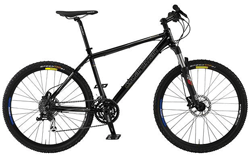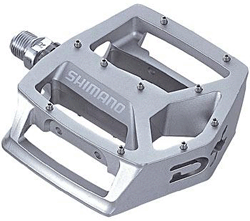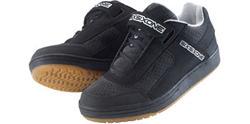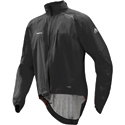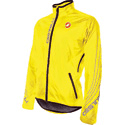|
 |
 Beginners
What type of bike should I get?
Choosing your first proper mountain bike can be quite a bewildering experience. Below is a list of typical questions and my personal opinions on each.
My personal recommendation to riders new to mountain biking is to buy what is known as a hardtail rather than a fully suspended bike, stay away from hybrids if you intend to ride off-road as they are just not suited to the terrain.
A hardtail is a bike with front suspension but a solid rear. There are several reasons to choose a hardtail as your first MTB, the first and most important is that compared to full suspension bikes of a similar quality they are far better value for money.
Hardtails are lighter and more efficient making riding uphill more enjoyable and less of an effort. A hardtail will also give you better feedback of what is happening under your wheels which is good when you first start and don’t really know what to expect.
The front suspension forks will help keep things smooth helping to reduce arm fatigue. Look for a bike with around 4" to 5” of front suspension travel. This will give a nice relaxed feeling bike rather than one with too much of your weight on the handlebars which can be very tiring after an hour or two in the saddle.
Disc brakes, whilst not essential, are advised as they give consistent braking performance in all weathers and do not wear the wheel rims when dirty as rim brakes do. Disc brakes will only come as standard on more expensive models.
Look for a bike with a triple chainset, the number of cogs at the front, this will give you a broad range of gears to get you up steep hills easily whilst also allow you to keep pedalling on fast downhill roads.
Consider an on-line retailer for large discounts on last years models to get a better bike for your money.
Most riders new to riding off-road opt to use flat pedals with pins to give extra grip. These pedals allow the use of normal trainers. Try to use a pair with a fairly stiff sole similar to a skate shoe as it will be more comfortable and offer greater control of the bike. Specialist mountainbike shoes are available in many different styles.
Also consider a bike rack if you are driving to the trails to save you taking the wheels off or getting your boot dirty. Alternatively a boot liner will help keep your boot clean if you don't fancy fitting a cycle carrier.
What size MTB should I get?
If you are unsure of what bike size suits you then it is best going to a quality local bike shop (lbs). Try to steer clear of chain stores especially ones that sell car parts as their staffs actual knowledge of riding can be a bit hit and miss. Other retailers may be willing to accept those bike to work vouchers.
The staff will have plenty of experience with customers in a similar situation as yourself and you will be able to try out bikes of different sizes until you find one that is comfortable. Remember however that you don’t have to buy from your lbs, last year’s bikes can be found online at significantly reduced prices in some cases up to 50% off.
Manufacturers size their bikes in different ways so whilst comparable there can be quite a difference between two different manufacturers’ sizes.
What MTB clothing is there?
There is plenty of bike specific clothing that can make spending longer periods in the saddle more comfortable but at this early stage I would suggest just two more items after a helmet and some gloves.
It is amazing the difference a pair of padded shorts make. These come in either traditional stretch lycra, which can be worn under your current clothes, or more fashionable baggy shorts.
The second recommended item of clothing is a waterproof jacket, you never know when you are going to get caught out by the weather. Finishing your ride soaking wet is not a pleasant experience.
Specialist cycling jackets exist with a closer cut to stop them flapping around as you ride and a lower cut at the back to keep your backside dry whilst riding however they are by no means essential. They also come in bright colour to help you be seen by drivers when on the road.
top | safety | 5 basic skills | Technique 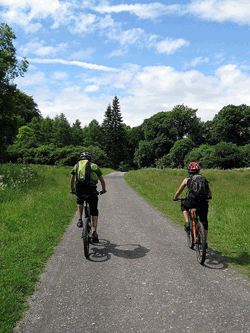 |
top | home | beginners | fundamentals | advanced | downhill | resources
Copyright ©2009 MTB Techniques | All rights reserved
The information on this site should be taken as a broad guide only and is open to interpretation and misunderstanding. You should consult a qualified instructor for more information about any of the tips given. MTB Techniques cannot accept responsibility or liability for accuracy, clarity or your interpretation of any of the topics provided. Mountain biking can be dangerous. You must make sure you understand the level of risk involved and wear suitable protective equipment whenever you ride.
